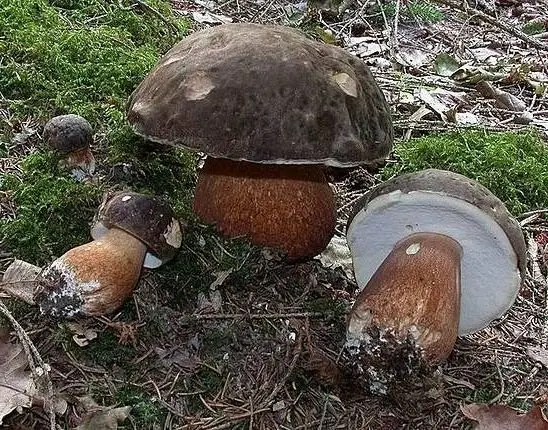Boletus bronze (Boletus aereus)
- Division: Basidiomycota (Basidiomycetes)
- Subdivision: Agaricomycotina (Agaricomycetes)
- Class: Agaricomycetes (Agaricomycetes)
- Subclass: Agaricomycetidae (Agaricomycetes)
- Order: Boletales (Boletales)
- Family: Boletaceae (Boletaceae)
- Genus: Boletus
- Type: Boletus aereus (Bronze boletus (Bronze boletus))
- Boletus bronze
- Boletus is dark chestnut
- White mushroom form dark bronze

Hat 7-17 cm in diameter
Tubular layer adhering to the stem
Spores 10-13 x 5 µm (according to other sources, 10-18 x 4-5.5 µm)
Leg 9-12 x 2-4 cm
The flesh of the cap in young mushrooms is hard, with age it becomes softer, white; the pulp of the leg is homogeneous, when cut it slightly darkens, and does not turn blue; the smell and taste are mild.
Spread:
Bronze boletus is a rare mushroom found in mixed (with oak, beech) forests and on moist humus soils, mainly in southern Our Country, in summer and in the first half of autumn, singly or in groups of 2-3 specimens. May also be found under pine trees.
The similarity:
It is possible to confuse the Bronze Boletus with the edible Polish mushroom (Xerocomus badius), it does not have a net on the stem, and the flesh sometimes turns blue; may also be similar to the very high quality Pine White Mushroom (Boletus pinophilus), but is more common and is distinguished by a wine- or brown-red cap and larger size. Finally, in deciduous and mixed forests, you can find the semi-bronze Boletus (Boletus subaereus), which has a lighter hat.
Bronze bolt – Good edible mushroom. For its qualities it is valued by gourmets more than Boletus edulis.









